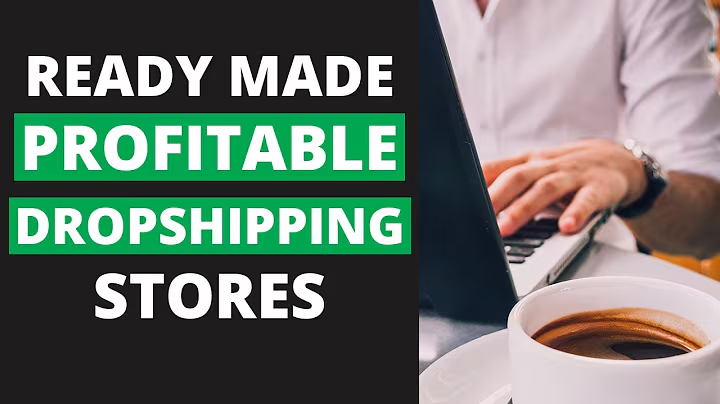7 Essential Pages for a Successful B2B Website
Table of Contents
- Introduction
- Home Page
- Results/Case Studies/Portfolio Page
- Pricing
- Service Pages
- About Us Page
- Contact Page
- Thank You Page
- Conclusion
Introduction
In today's digital age, having a strong online presence is essential for any B2B (business-to-business) company. A well-designed website can be a powerful tool to attract and convert potential customers into loyal clients. However, not all website pages are created equal. In this article, we will discuss the seven must-have pages for a B2B website, based on industry research and best practices. From the home page to the contact page, each of these pages serves a unique purpose in capturing leads and driving sales. So, let's dive in and explore the essentials for a successful B2B website.
Home Page
The home page is the virtual storefront of your B2B website. It is typically the most visited page and serves as an introduction to your business. To make a strong first impression, the home page should load quickly and clearly communicate what your company does and how it can help potential clients. A compelling value proposition should be highlighted prominently, along with clear calls to action (CTAs) to guide visitors to learn more or take the next step. By optimizing your home page, you can effectively capture the attention of your target audience and lead them towards conversion.
Results/Case Studies/Portfolio Page
A results/case studies/portfolio page is an essential component of a B2B website. This page showcases your past work, demonstrating your ability to deliver on your promises. By sharing real-world examples of successful projects or client success stories, you can build trust and credibility with potential customers. Including details such as the problem faced by clients, the solution provided, and the results achieved can effectively showcase your expertise and the value you bring to the table. By presenting tangible evidence of your capabilities, you can encourage visitors to take the next step and convert into leads.
Pricing
One of the biggest obstacles in the B2B sales process is budget constraints. Many potential clients may be interested in your product or service but hesitate to inquire further due to uncertainty about pricing. By providing transparent pricing information on your website, you can help prospects self-qualify and filter out those who cannot afford your solution. This saves both your sales team and the prospect valuable time. A dedicated pricing page that outlines the various packages or options available, along with clear calls to action, enables potential clients to make informed decisions and move forward with confidence.
Service Pages
Service pages are the backbone of a B2B website. These pages delve deep into the specific services or solutions offered by your company. It is crucial to focus on how your offerings address the pain points and challenges faced by your target audience. By clearly communicating the benefits and value of your services, you can win over potential customers and differentiate yourself from the competition. Additionally, having separate service pages for each unique offering or target market can help improve search engine optimization (SEO) and enhance the user experience.
About Us Page
The About Us page is often overlooked, but it plays a vital role in building trust and establishing credibility. Instead of simply boasting about your company's accolades or years of experience, use this page to tell your company's story. Share your mission, vision, and values, explaining why you started the business and how you serve your customers. Emphasize the problems you solve and how you can make a difference in your clients' lives or businesses. Including information about your team, along with testimonials and reviews, adds a personal touch and builds rapport with potential customers.
Contact Page
The contact page is where potential clients can take the next step and get in touch with your sales team. It is essential to make the inquiry process as easy and efficient as possible. Place the inquiry form above the fold, ensuring it is visible without the need for scrolling. Keep the form simple, only asking for essential information such as name, email, and phone number. Including a testimonial or review next to the form can help alleviate any anxiety prospects may have. Additionally, provide alternative contact options such as a phone number or email address to cater to different preferences.
Thank You Page
The thank you page is often an overlooked opportunity to engage with potential customers. After a prospect submits a form or takes an action on your website, this page serves as a confirmation and appreciation for their interest. It is an excellent opportunity to set expectations by letting them know when and how they can expect to hear from your sales team. You can also include relevant resources, such as links to your blog, podcast, or educational content, to provide value and keep the prospect engaged. A well-designed thank you page enhances the overall user experience and leaves a positive impression.
Conclusion
Building an effective B2B website involves strategic planning and optimization of various key pages. Each page serves a unique purpose in engaging potential customers and guiding them towards conversion. From the home page to the thank you page, it is crucial to create a seamless user experience that instills trust and provides value. By incorporating these seven must-have pages on your B2B website, you can maximize lead generation, improve customer retention, and ultimately drive business growth. So, take the time to evaluate your current website and ensure it includes these essential pages to maximize its potential.
Highlights
- The home page is the virtual storefront of a B2B website and should make a strong first impression.
- Results/case studies/portfolio pages showcase past work and build trust with potential clients.
- Providing transparent pricing information helps prospects self-qualify and save time for both parties.
- Service pages should focus on the benefits and value of offerings, addressing the target audience's pain points.
- The About Us page tells the company's story and builds credibility with potential customers.
- The contact page and inquiry form should be easy to use and provide alternative contact options.
- The thank you page confirms the customer's actions and provides additional value and engagement opportunities.



















